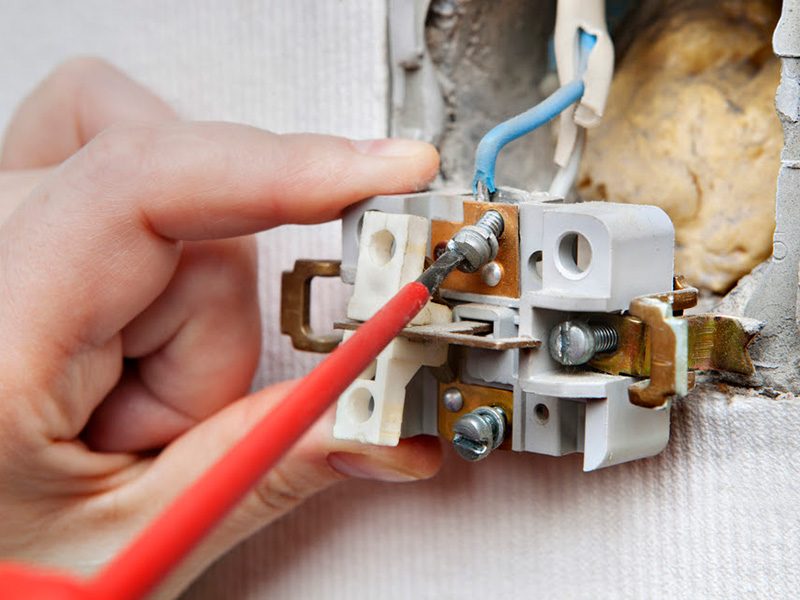You can never be too careful when it comes to the safety of your home’s electrical outlets. One of the best ways to prevent shocks and ensure safety is by installing Ground Fault Circuit Interrupter (GFCI) outlets. These outlets are designed to quickly cut off power in the event of a ground fault, effectively reducing the risk of electrical shock. In this blog post, we will discuss the importance of GFCI outlet installation and provide you with all the information you need to ensure the safety of your home’s power outlets.
Key Takeaways:
- GFCI outlets are crucial for safety: Installing GFCI outlets in areas like kitchens, bathrooms, and outdoor spaces is crucial to protect against electrical hazards.
- Proper installation is key: It is important to ensure that GFCI outlets are installed correctly to guarantee their effectiveness in detecting electrical faults.
- Regular testing is necessary: Testing GFCI outlets at least once a month can help identify any issues and ensure they are working properly to prevent electric shocks.
- Consider hiring a professional: If you are unsure about installing GFCI outlets, it is best to hire a qualified electrician to ensure the job is done safely and effectively.
- Compliance with building codes: Installing GFCI outlets not only ensures safety but also helps comply with building codes and regulations related to electrical installations in residential buildings.
GFCI outlets, or Ground Fault Circuit Interrupter receptacles, are a crucial safety feature in modern electrical systems. They constantly monitor the electric current running through them and can automatically shut off the current if there is any inconsistency, such as when an appliance is plugged in and falls into water. This prevents electrical shocks and reduces the risk of electrical fires.
GFCI outlets are typically found in areas near water, such as kitchens, bathrooms, and outdoor spaces.To install a GFCI outlet, you will need a screwdriver, a voltage tester, a wire stripper, pliers, a GFCI outlet replacement, and electrical tape. It is essential to follow the National Electrical Code (NEC) requirements and ensure that the existing circuit wiring is compatible with GFCI outlets.
If you are unsure about the wiring or lack electrical expertise, it is recommended to hire a qualified electrician to install the GFCI outlet safely and correctly.When wiring a GFCI outlet, connect the incoming power to the line terminals to protect only the GFCI outlet itself.
If you want the GFCI outlet to provide protection to downstream outlets as well, connect the outgoing power to the load terminals. Make sure to test the GFCI outlets monthly to ensure they are in good working order. If a GFCI outlet fails or cannot be reset after tripping, replace it.GFCI breakers provide centralized protection for an entire circuit, which can be beneficial if you have multiple outlets that need safeguarding.
However, GFCI outlets require less maintenance as they provide protection for the outlet itself, and only that outlet is affected if it malfunctions, while other outlets on the same circuit continue to function. The choice between GFCI outlets and breakers depends on your specific electrical requirements, budget, and preferences.GFCI receptacles should be installed in areas where electrical safety is paramount, such as kitchens, bathrooms, outdoor areas, garages, and crawl spaces.

In commercial and industrial settings, GFCI receptacles are equally crucial to safeguard employees, customers, and valuable equipment. Upgrading to GFCI receptacles in older homes is essential to enhance safety levels and meet current electrical code requirements.
Understanding GFCI Outlets
What Is a GFCI Outlet?
Some modern homes come equipped with Ground Fault Circuit Interrupter (GFCI) outlets, an crucial component in ensuring electrical safety. These outlets are designed to prevent electrical shock by quickly shutting off power when they detect a ground fault or imbalance in the electrical circuit.
How GFCI Outlets Prevent Electrical Hazards
On top of preventing electrical shock, GFCI outlets also help reduce the risk of electrical fires caused by ground faults. Any sudden surge of electricity to a person or an appliance can lead to serious injury or damage, making the installation of GFCI outlets in areas prone to moisture, such as kitchens, bathrooms, and outdoor spaces, crucial.
With their advanced technology, GFCI outlets monitor the flow of electricity in a circuit. If there is an imbalance, such as when electricity is traveling through water or a person, the GFCI outlet reacts swiftly, tripping the circuit and cutting off power. This rapid response can prevent potentially fatal electrical accidents.
Planning for GFCI Outlet Installation
Identifying Need and Locations
On the journey to secure your home’s electrical outlets, the first step is to identify where Ground Fault Circuit Interrupter (GFCI) outlets are necessary. GFCI outlets are mandated in areas where water and electricity are in close proximity to prevent electrical shocks. Common locations include kitchens, bathrooms, garages, and outdoor outlets.
Tools and Materials Required for Installation
To begin on the installation of GFCI outlets, the necessary tools and materials should be gathered. Basic items required include a voltage tester, screwdriver, wire stripper, and of course, the GFCI outlet itself. A power drill and safety goggles are recommended for precision and protection during installation.
It is crucial to ensure that all tools are in good working condition before starting the installation process. Additionally, make sure to turn off the power to the outlet at the main circuit breaker to avoid any electrical accidents. Safety should always be a top priority when working with electricity in your home.
Step-by-Step GFCI Outlet Installation Guide
Once again, ensuring the safety of your home’s electrical outlets is crucial. Below is a detailed guide on how to install a Ground Fault Circuit Interrupter (GFCI) outlet in your home.
| Removing the Existing Outlet | Wiring and Installing the GFCI Outlet |
Removing the Existing Outlet
For a safe installation, start by turning off the power to the outlet at the circuit breaker. Once confirmed that the power is off using a voltage tester, carefully unscrew the outlet cover and outlet from the wall. Make note of the wiring configuration before disconnecting the wires.
Wiring and Installing the GFCI Outlet
Wiring the GFCI outlet involves connecting the line and load wires to the appropriate terminals on the outlet. The line wires bring power from the circuit breaker, while the load wires extend the GFCI protection to other outlets. Follow the manufacturer’s instructions carefully, ensuring all connections are secure before mounting the outlet back into the wall.
GFCI outlets are important for protecting against electrical shocks in areas where water is present, such as kitchens, bathrooms, and outdoor spaces. Installing these outlets provides an added layer of safety for you and your family, giving you peace of mind in your home.
Testing and Maintenance
How to Test a GFCI Outlet
Many homeowners are unaware of the importance of regularly testing their GFCI outlets. To test a GFCI outlet, simply press the “Test” button on the outlet. This should cause the “Reset” button to pop out, indicating that the outlet has been properly tripped.
Routine Maintenance Tips for GFCI Outlets
Any homeowner with GFCI outlets installed in their home should follow these routine maintenance tips to ensure the continued safety and functionality of their outlets:
- Test GFCI outlets monthly to make sure they are in proper working condition.
- Inspect outlets for any signs of damage or wear, and replace any damaged outlets immediately.
- Assume that outlets located in areas prone to moisture or water exposure may require more frequent maintenance.
GFCI outlets are an vital part of any home’s electrical system, providing an extra layer of protection against electrical hazards. By following these routine maintenance tips, homeowners can ensure that their GFCI outlets are functioning properly and keeping their home safe.
Final Words
So, installing GFCI outlets in your home is crucial for ensuring the safety of your family and property. By adding this extra layer of protection to your power outlets, you can prevent dangerous electrical shocks and potential fire hazards. Taking the time to install GFCI outlets in key areas like kitchens, bathrooms, and outdoor spaces can provide peace of mind and safeguard against unforeseen accidents. Make this important investment in your home’s electrical system to ensure a safer and more secure environment for everyone who lives there.
FAQ
Q: What is a GFCI outlet?
A: A GFCI (Ground Fault Circuit Interrupter) outlet is a specially designed electrical outlet that helps prevent electric shock in homes and buildings by quickly shutting off power when it detects a ground fault or electrical leakage.
Q: Why is it important to have GFCI outlets in your home?
A: GFCI outlets are important for ensuring safety in your home because they provide additional protection against electrical hazards, such as electric shock and electrical fires, especially in areas where water is present, like bathrooms, kitchens, and outdoor spaces.
Q: Where should GFCI outlets be installed in a home?
A: GFCI outlets should be installed in areas where there is a higher risk of electrical hazards, such as kitchens, bathrooms, laundry rooms, garages, outdoor outlets, and any other areas where water may come in contact with electrical devices.
Q: Can I replace a standard outlet with a GFCI outlet myself?
A: While it is possible to replace a standard outlet with a GFCI outlet yourself, it is recommended to hire a qualified electrician to ensure that the installation is done correctly and meets all safety regulations and requirements.
Q: How often should GFCI outlets be tested for proper function?
A: GFCI outlets should be tested monthly to ensure they are working properly. This can be done by pressing the “Test” button on the outlet, which should cause the power to shut off. Pressing the “Reset” button should restore power. If the outlet does not function correctly, it should be replaced immediately.
